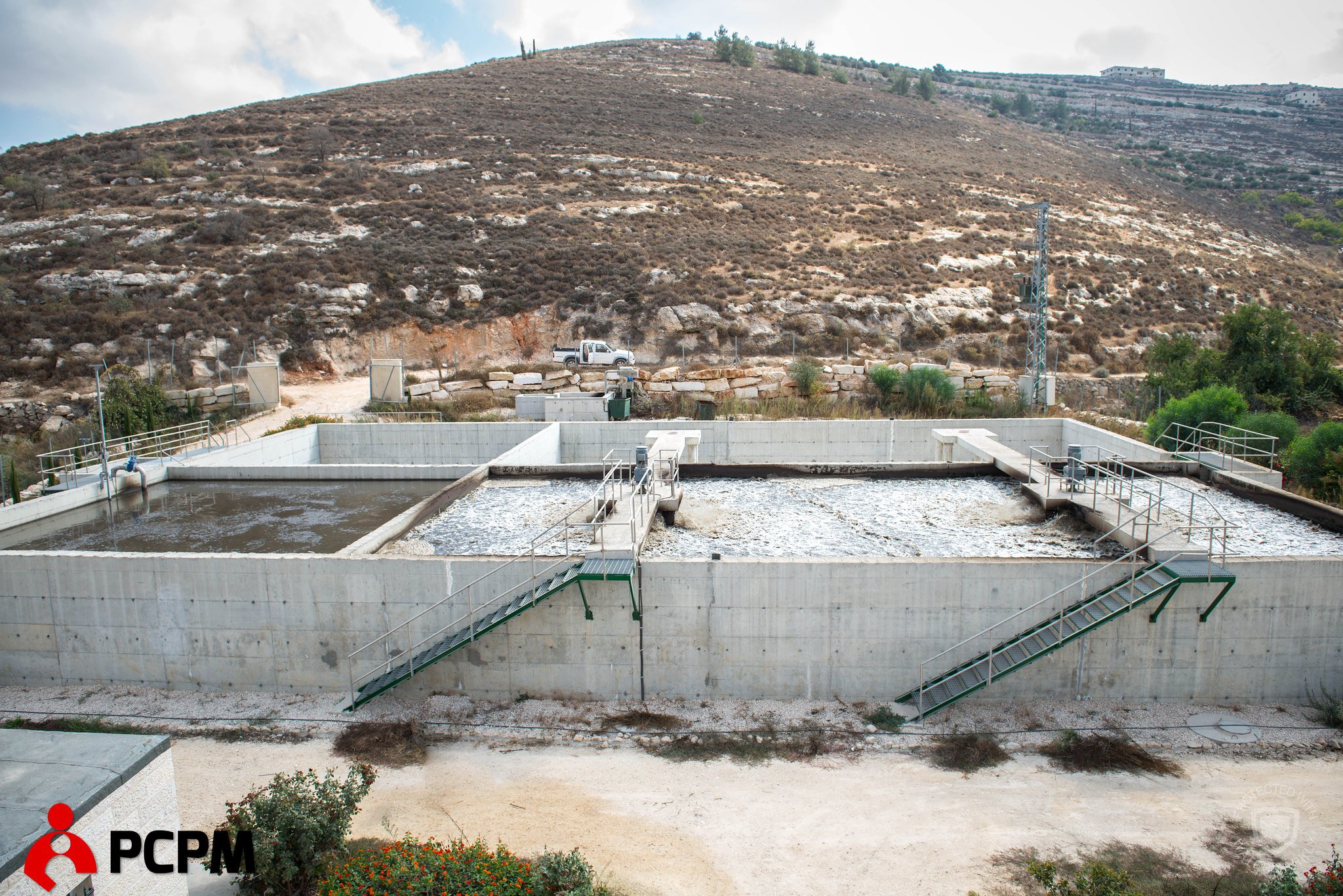
Water supply services
In the West Bank, 93% of the population has access to improved freshwater services, thanks to a 418,602-km-long water distribution network. By comparison, the Gaza Strip, with its 3,428-km-long water distribution network, faces an alarming and worsening situation, with only 1% of the population having access to improved freshwater services.[1]
All Gazans and 83% of West Bank residents are serviced by providers under the control of the Ministry of Local Governments (MoLG). The remaining 17% of the West Bank population is served by water utilities such as the Jerusalem Water Undertaking (JWU).[2]
Because of the political fragmentation mentioned in the first section, the situation in the Gaza Strip is more complicated. Gaza relies on unregulated private sector services. Almost 97% of fresh water consumed in the territory is supplied by small-scale independent providers, with the number estimated to have increased from 20 in 2010 to 100 in 2016.[2]
Wastewater services
In Palestine, 53.9% of the population is connected to the wastewater network while the rest uses cesspits (tight and porous)[3] (Table 1). In the Gaza Strip, 83.6% of the population is connected to a 1,888-km-long sewer network.[4] Map 1 shows the location of water and wastewater service facilities in the Gaza Strip. It also indicates the energy needed to operate these facilities, a deficit of which negatively impacts service delivery.
Table 1: Relative distribution of households in Palestine in percentage, according to the method of wastewater disposal. Source PCBS, 2015.
| Wastewater network (%) | Tight cesspit (%) | Porous cesspit (%) | Other (%) | Total (%) | |
| Palestine | 53.9 | 31.8 | 13.5 | 0.8 | 100 |
| Urban | 60 | 28.1 | 11.1 | 0.8 | 100 |
| Rural | 8 | 61.5 | 29.3 | 1.2 | 100 |
| Camps | 93.2 | 4.2 | 2.6 | 0 | 100 |
| West Bank | 38.4 | 43.3 | 17.1 | 1.2 | 100 |
| Urban | 45.8 | 39.4 | 13.5 | 1.3 | 100 |
| Rural | 7.6 | 61.9 | 29.3 | 1.2 | 100 |
| Camps | 86.2 | 8.7 | 5.1 | 0 | 100 |
| Gaza Strip | 83.5 | 9.8 | 6.7 | 0 | 100 |
| Urban | 82.9 | 10 | 7.1 | 0 | 100 |
| Rural | 14.6 | 55.9 | 29.5 | 0 | 100 |
| Camps | 98.2 | 0.9 | 0.9 | 0 | 100 |
The West Bank has more WWTPs than the Gaza Strip. However, the connection ratio to the wastewater network is still low, at only 38.4%. Table 2 lists the WWTPs currently operating in the West Bank and their operating capacity. It can be seen that these WWTPs are not operating at their full capacity, the reasons for which require further investigation.
Table 2: Wastewater treatment plants in the West Bank.
| Wastewater treatment plant | Governorate | City | Design / Flow (m3/d) | Current / Flow (m3/d) |
| Nablus West | Nablus | Nablus | 15,000 | 11,000 |
| Jenin | Jenin | Jenin | 7,500 | 3,500 |
| Jericho | Jericho | Jericho | 6,600 | 1,100 |
| Ramallah Al-Bireh | Ramallah | Al-Bireh | 6,100 | 5,725 |
| Ramallah Al-Tireh | Ramallah | Al-Tireh | 2,000 | 1,600 |
| Hebron Sair/Arroub | Hebron | Sair/Arroub | 1,200 | NA |
| Ramallah Rawabi | Ramallah | Rawabi | 710 | 65 |
| Nablus Beit Dajan | Nablus | Beit Dejan | 540 | 110 |
| Nablus Sarra | Nablus | Sarra | 460 | 250 |
| Ramallah Taybeh-Rammun | Ramallah | Taybeh, Rammun | 450 | 80 |
| Jenin Anza | Jenin | Anza | 342 | 100 |
| Nablus Beit Hasan | Nablus | Beit Hasan | 211 | 85 |
| Qalqilya Hajja | Qalqilya | Hajja | 173 | 65 |
| Jenin Misilya | Jenin | Misilya | 150 | - |
Desalination plants
Over 150 small-capacity desalination plants operate in the Gaza Strip. Around 25 of them are operated by public utilities and the rest by commercial operators. The private desalination plants use reverse osmosis (RO) technology with no proper monitoring of water quality.[5]
In the long term, there are plans to build the Gaza Central Desalination Plant at a cost of $621.5 million in two phases to produce a total of 110 MCM of desalinated water per year, with each phase producing 55 MCM/yr (150,000 m3/day).[6]
In the Jordan Valley, small pilot desalination projects for brackish water exist and are used mainly for agricultural purposes through the private sector. Their total capacity is less than 0.5 MCM/yr. Meanwhile, 162 wells with brackish water are used for agricultural irrigation. It was found that operating RO technology using solar energy is economically feasible and will reduce the cost of desalination.[7] A large facility is planned downstream of Fashka Springs, near the Dead Sea, with an expected capacity of at least 22 MCM/yr by 2022.[8]
[1] Water Sector Regulatory Council (WSRC), 2018. Performance Report for Water and Wastewater Service Providers.
[2] Water Global Practice, 2018. Securing Water for Development in West Bank and Gaza.
[3] PCBS, 2015. Relative distribution of households in Palestine according to the method of wastewater disposal.
[4] WSRC, 2018. Performance Report for Water and Wastewater Service Providers.
[5] Water Global Practice, 2018. Securing Water for Development in West Bank and Gaza.
[6] Union for the Mediterranean, nd. The Desalination Facility for the Gaza Strip.
[7] Taha, M and Al-Sa’ed, R, 2017. ‘Application potential of small-scale solar desalination for brackish water in the Jordan Valley, Palestine’. International Journal of Environmental Studies 75(1): 214-225.
[8] PWA, 2012. National Water Strategy for Palestine: Toward Building a Palestinian State from Water Perspective.

